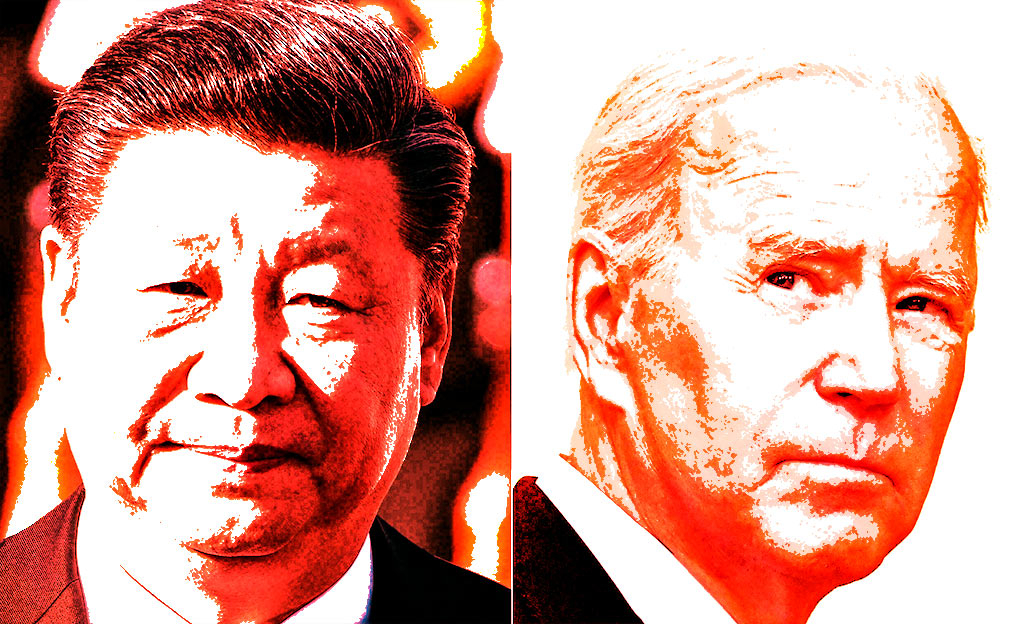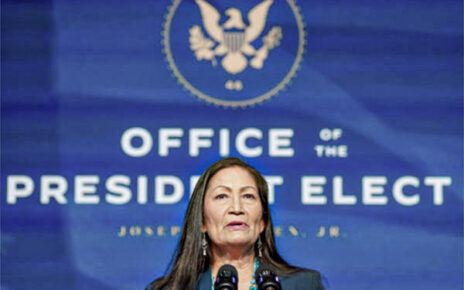By Bethany Allen-Ebrahimian, Dave Lawler | Axios | February 11, 2021
President Biden on Wednesday evening held his first call with Chinese President Xi Jinping since taking office, raising thorny issues including human rights in Hong Kong and Xinjiang.
The big picture: Ahead of the call, senior administration officials offered reporters the most detailed portrait to date of Biden’s policies toward China, and how they will build on — and diverge from — Donald Trump’s approach.
Driving the news: “President Biden underscored his fundamental concerns about Beijing’s coercive and unfair economic practices, crackdown in Hong Kong, human rights abuses in Xinjiang, and increasingly assertive actions in the region, including toward Taiwan,” according to a White House readout of the call.
- The leaders also discussed the pandemic, climate change, nuclear proliferation, and seeking areas of engagement when it serves their countries’ mutual interests.
Between the lines: A senior administration official told reporters ahead of the call that Biden’s approach to his first conversation with Xi as president would be “practical, hard-headed, clear-eyed and rooted in a deep familiarity with his counterpart on the other end of the line.”
One key quote, from a White House briefing earlier today about the Biden administration’s China policies:
“We looked at what the Trump administration did over the last four years and found merit in the basic proposition of an intense strategic competition with China. … But we found deep problems with the way in which the Trump administration went about that competition and… put us in a weaker position to carry out that competition.”
— Senior administration official on a call with reporters
The main flaw of Trump’s approach, according to the official, was it “depleted core American sources of strength” — its values, domestic political and economic system, alliances and leadership in international institutions.
- Biden plans to pick up where Trump left off and define much of U.S. foreign policy around competition with China, while attempting to repair those “sources of strength.”
Breaking it down: The senior administration officials laid out a five-part strategy.
- The home front. If the U.S. fails to repair its economy, maintain its edge in innovation and “rebuild our industrial base,” the official said, the strategy will be doomed to fail even if the U.S. gets everything else right.
- Alliances. Across all areas of competition with China, Biden will engage with partners in Europe and Asia, in particular “the Quad” military partnership with Australia, India and Japan.
- Technology. The official said the administration would immediately begin working with Republicans to build consensus around investments in key industries like semiconductors, artificial intelligence, biotech and clean energy “to make sure that we’re maintaining our edge.”
- Trade. Biden will work “off the baseline” of Trump’s tariffs, though the official said “you can anticipate there will be changes” to tariff policies after a review is complete. Biden will coordinate his trade policies closely with partners, particularly in Europe.
- Defense. The senior administration official noted that the administration had already run freedom of navigation exercises in South China Sea, transited the Taiwan Strait, and begun naval exercises with regional partners. The official also added that Biden would be unlikely to reduce U.S. troop levels in Asia — something considered by Trump.
“We need to stick with this and play the long game,” a senior administration official said of Biden’s strategy, noting it would “play out over the course of years.”
What to watch: A senior administration official on the briefing call noted a “sense of concern” among partners in Asia that the U.S. would be unable or unwilling to play its traditional role in the region, in part because of lingering worries about U.S. reliability after Trump but also because of America’s struggle to contain the pandemic at home.
- “We’re in a position where we believe if we can get through the next 6 to 8 months we’ll be able to surge forward and continue to play a strong role in the Asia Pacific and also find areas that are consequential and important that we can work with China,” the official said.
- To do so, Biden would need a “vigilant, purposeful, steady approach.”
The bottom line: Biden’s strategy will be driven by an awareness that “the lion’s share of the history of the 21st century is going to be written in the Asia-Pacific,” the official said.




